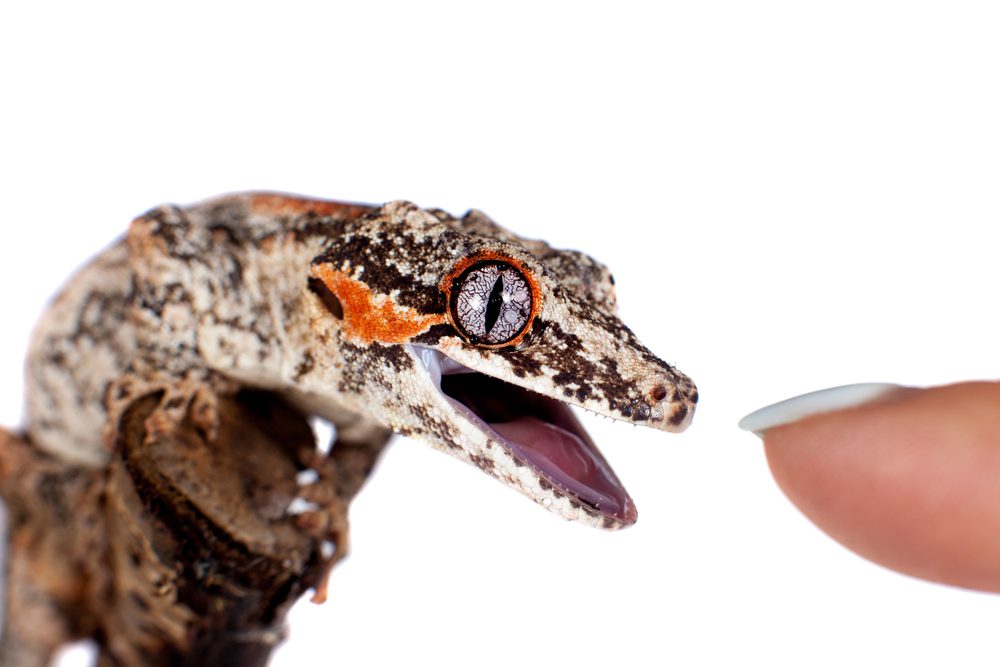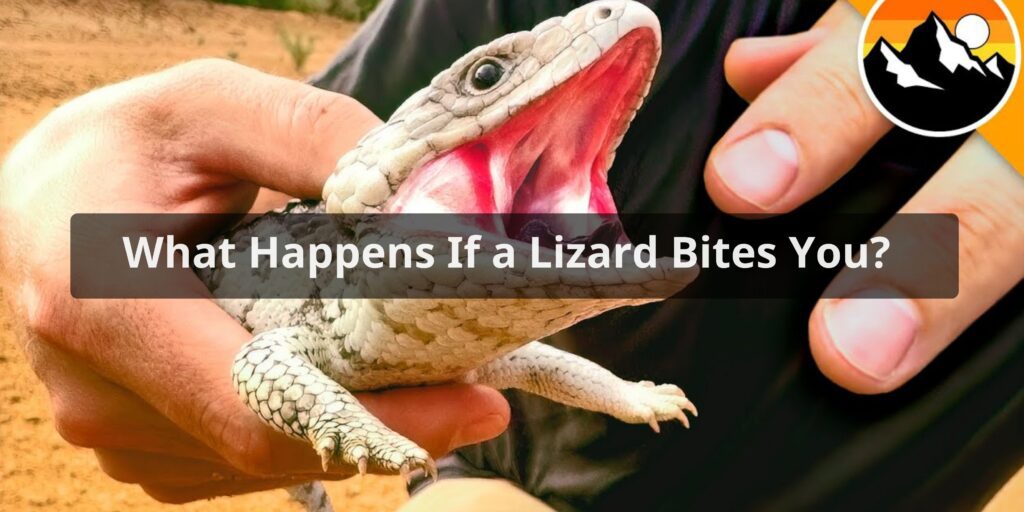Lizards are fascinating creatures that come in all shapes, sizes, and colors. While most lizards are harmless, some larger lizard species can give a painful bite if they feel threatened. Here’s an overview of what to expect if you are ever bitten by a lizard.
Potential Health Effects of Lizard Bites
Many lizards have sharp teeth designed for grabbing prey, which can puncture skin and cause wounds. However, lizard bites are not considered medically significant in most cases. Here are some potential health effects to be aware of:
- Punctures or cuts: Lizard teeth can leave small puncture wounds or cuts which may bleed or become infected if not properly cleaned. The severity depends on the size of the lizard. Monitor the wound for signs of infection like redness, swelling, oozing pus, and fever.
- Bacterial infection: Lizards have bacteria in their mouths that can get introduced into the wound during a bite. Seek medical care if the bitten area shows any signs of infection.
- Allergic reaction: Some people may experience an allergic reaction to lizard saliva injected during a bite. Reactions can include redness, itching, swelling, and hives around the bite. Use antihistamines and see a doctor if symptoms are severe.
- Toxic reactions: Gila monsters and Mexican beaded lizards produce a mild venom. Bites can cause swelling, nausea, vomiting, and other toxic effects. Seek emergency care if bitten by one of these venomous lizard species.
- Tetanus: Lizard bites pose a small risk of tetanus infection if the wound becomes contaminated. Make sure your tetanus vaccine is up-to-date.
So while most lizard bites are not medically concerning, take care to properly clean the bite, watch for infection, and get medical attention for any worrying symptoms.
What to Do if Bitten by a Lizard

If you are unfortunate enough to be on the receiving end of an unhappy lizard’s bite, here are some tips for what to do next:
1. Wash the wound: Immediately wash the bite with soap and water to help flush out bacteria and debris. Run water over the wound for several minutes.
2. Stop bleeding: Apply pressure with a clean cloth or bandage to stop any bleeding from the bite. Elevate the area if possible.
3. Apply antibiotic ointment: After washing, apply an antibiotic ointment like polymixin B or bacitracin to help prevent infection.
4. Dress the wound: Cover the bite with a sterile bandage or dressing. This keeps the wound protected.
5. Monitor for signs of infection: Keep an eye on the wound over the next few days. Signs of infection include increasing redness, swelling, warmth, oozing, and fever. Seek medical care if infection develops.
6. Take over-the-counter pain medication: Use acetaminophen, ibuprofen, or other non-steroidal anti-inflammatory medications as needed for pain relief.
7. Get a tetanus shot if needed: If it has been more than 5 years since your last tetanus shot, or if the bite is dirty, get a tetanus booster within 48 hours.
8. See a doctor for severe reactions: Get emergency care if you develop any worrying symptoms like swelling, numbness, trouble breathing, increased pain, or flu-like illness.
With proper first aid and monitoring, most minor lizard bites will heal on their own within a week or so. But it’s important to take quick action to lower the risks of complications.
Factors That Contribute to the Severity of Lizard Bites
Not all lizard bites are equal. Bites can range from a pinch to a serious injury depending on these factors:
- Size of the lizard: Large lizards can inflict more damage with their sizable jaws and teeth. Monitor lizards, Gila monsters, and some iguanas have the most potential for harm. Small geckos or anoles rarely cause issues.
- Sharpness of teeth: Lizards like the aptly named sharptooth lizards have serrated, knife-like teeth to tear prey. These inflict worse cuts and punctures compared to smooth, peg-like teeth.
- Venom: As mentioned, venomous lizards like Gila monsters can make bites much more dangerous and painful with their toxic secretions.
- Depth of the bite: Quick nips often don’t break the skin. But deep, crushing bites are more likely to require stitches and result in scarring.
- Location of bite: Bites to areas with more blood vessels, nerves, and delicate tissue – like the face and hands – are typically more traumatic.
- Individual reactions: Some people may have mild, localized reactions to bites. Others could have severe swelling, pain, nausea, and other signs of sensitization to components in lizard saliva.
So pay attention to the type of lizard involved and extent of the injury when deciding whether medical care is warranted after a bite.
Common Lizards That Bite
While lizard temperaments can vary by individual, these types are more prone to bite if threatened or mishandled:
- Monitor lizards: Large, carnivorous monitors like the Komodo dragon are capable of seriously damaging bites, although attacks on people are rare. Even smaller monitor species can give painful bites.
- Iguanas: Pet iguanas normally adapt to handling. But unused to humans, bites are common as they instinctively defend themselves. Iguana bites can lead to bad cuts and bruises.
- Gila monsters: These venomous lizards pack a dangerous bite along with toxic saliva. Bites require emergency medical care to manage severe pain, swelling, low blood pressure, and other toxic effects.
- Tegus: These large lizards have strong jaws and sharp teeth that can cause deep punctures and lacerations. Tegu bites often require stitches and antibiotics.
- Bearded dragons: Normally docile as pets, agitated bearded dragons will bite defensively and cling on. Their serrated teeth can scratch deeply. Proper handling reduces nipping.
- Geckos: House geckos frequently bite when captured or handled roughly. Their small size limits injury, though bacteria from their mouths could cause infection.
- Anoles: Skittish anoles will bite when grabbed and can break the skin with their tiny needle-like teeth. But bites are very minor and painless.
So use care around larger, carnivorous lizards like monitors and tegus. Even smaller herbivorous species can give painful defensive bites if mishandled. Learning proper handling techniques for pet lizards can help avoid bites.
When to Seek Medical Care for a Lizard Bite
For mild lizard bites, basic first aid and cleaning at home is often sufficient. But see your doctor or visit an emergency room for:
- Deep punctures, tears, or cuts that may require stitches
- Severe bleeding that won’t stop with pressure
- Signs of infection like increasing swelling, redness, oozing, fever
- Numbness or tingling spreading from the bite site
- Dizziness, blurred vision, trouble breathing, or other concerning symptoms
- Multiple bites from a venomous Gila monster lizard
- Bites to the face, hand, or genitals which are at higher risk of complications
- Any symptoms of severe allergic reaction including swollen lips/tongue, wheezing, rash, chest tightness
Children, elderly patients, those with chronic illnesses, and immunocompromised individuals should also be evaluated after even minor lizard bites to be safe.
With prompt medical treatment, serious complications from lizard bites are uncommon. Doctors will thoroughly clean and irrigate the wound, prescribe antibiotics if needed, provide wound care instructions, and address any allergic response. Make sure to inform the doctor of any unusual symptoms that develop after the bite.
Preventing Lizard Bites
You can reduce the chances of bites from lizards by following these safety precautions:
- Leave wild lizards alone – don’t try to touch or capture them. Monitor lizards and venomous species like Gila monsters require extra distance and caution.
- Perform slow movements around lizards instead of swift, startling gestures. Move quietly and gently when handling lizards.
- Pick up lizards properly by supporting the belly and hindquarters. Don’t grab the tail or restrict movement.
- Learn to read lizard body language. Agitated lizards may puff up, open their mouth, hiss, or change color. Leave them be if they appear stressed.
- House pet lizards in an adequately sized terrarium with hiding places to reduce stress. Handle frequently so they become accustomed to you.
- Supervise young children around lizards carefully. Don’t allow rough play that could scare or provoke the animal.
- Wash hands after handling lizards, their food, or habitats to prevent bacteria exposure. Avoid touching eyes, nose, or mouth before hand washing.
With proper handling techniques and respect for their space, lizards can make interesting pets or simply fascinating wild creatures to admire from a safe distance. Learning about their behaviors goes a long way in avoiding defensive bites.
Conclusion
Most lizard bites only result in minor puncture wounds, cuts, or scratches that can be easily treated at home. Proper first aid like washing, antibiotic ointment, bandaging, and pain relief is usually sufficient. However, more serious bites require medical care, especially if they become infected or provoke severe allergic reactions. Prevention comes down to handling lizards carefully, moving slowly, correctly identifying aggressive behaviors, and giving venomous species a wide berth. While lizard bites should never be taken lightly, a little common sense goes a long way in staying safe around these interesting reptiles.
FAQs About What Happens if a Lizard Bites You
Can a lizard bite transmit diseases to humans?
Lizard bites rarely transmit diseases to humans. While bacteria in their mouths can cause minor infections, the risk of serious illness is low. Still, it’s advisable to clean the wound thoroughly and keep an eye on any unusual symptoms. Seek medical attention if infection signs develop.
Do all lizard bites result in venom injection?
No, not all lizard species inject venom when they bite. Most lizard bites are harmless and don’t involve venom injection. Venomous lizards, like some species of monitor lizards or Gila monsters, have specialized glands for producing venom. Identification is crucial to determine the potential danger of a bite.
How can I identify if a lizard is venomous?
Identifying a venomous lizard involves considering multiple factors. Look for distinctive physical characteristics like enlarged glands, specialized teeth, or conspicuous markings. Researching the lizard’s species, behavior, and habitat can provide valuable insights. If unsure, it’s best to err on the side of caution and avoid handling any lizard.
What are the common symptoms of a lizard bite?
Common symptoms of a lizard bite include pain, swelling, redness, and mild irritation around the bite area. In some cases, there might be puncture wounds or bleeding. Severe symptoms like numbness, dizziness, or difficulty breathing are more likely with bites from venomous species. Seek medical help if severe symptoms arise.
Should I seek medical attention for a lizard bite?
For non-venomous lizard bites that show minor symptoms, basic wound care like cleaning and applying antiseptic can suffice. However, if you’re uncertain about the species or if the bite exhibits severe symptoms such as intense pain, swelling, or systemic reactions, it’s wise to seek prompt medical attention to rule out complications.



